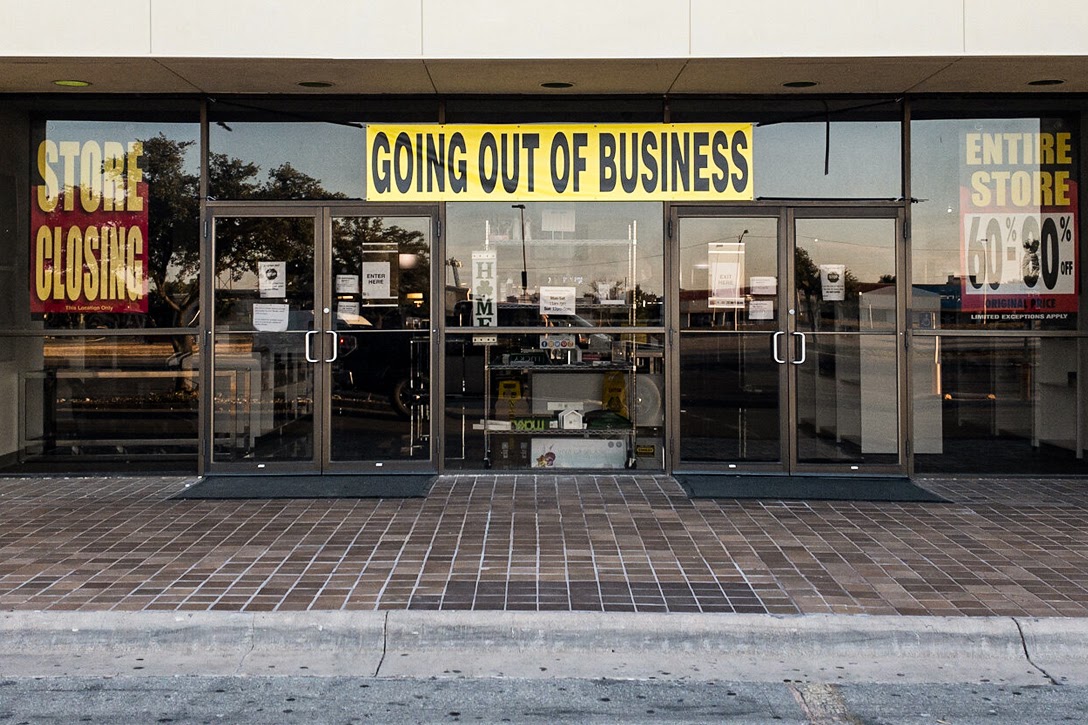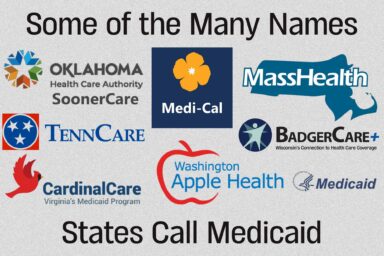Mergers and widespread small business closures have allowed big companies to dominate some markets, including healthcare.
The fight against COVID-19 requires many tools, ranging from the simple and obvious (masks and gloves) to the massive (a future vaccine for billions of people). So it’s no exaggeration to say the rapid recovery of the US economy will depend to a great degree on how the healthcare industry meets the continuing demand for pandemic-fighting goods and services.
Yet the ability of healthcare companies to respond to this unprecedented challenge with speed, flexibility, and the spirit of innovation remains in doubt.
In many business sectors, mergers and acquisitions have resulted in fewer companies with larger market shares, driving out smaller competitors. In other words, big business keeps getting bigger — and healthcare is no exception. The impact on the country’s pandemic readiness has been amply documented.
Short-Circuiting the Ventilator Supply
After a global series of pandemic threats, including SARS, MERS, bird flu, and swine flu, US public health officials decided to be proactive. In 2007, they launched “Project Aura,” a program designed to address the shortage of hospital ventilators.
In 2008, after comparing proposals, government officials contracted with a small company, Newport Medical Instruments, to build 70,000 portable ventilators at $3,000 apiece, well below the typical cost of $10,000. But the project never succeeded.
Newport Medical was acquired by Coviden, a large publicly traded medical equipment company, in 2012. Coviden built more traditional and expensive ventilators and wanted to get out of the contract, claiming the project wasn’t sufficiently profitable. In 2020, another company picked up the contract but delivered far fewer than the 70,000 ventilators originally sought by the government.
“The long and short of it is that Coviden wanted to keep a potential competitor — a cheaper substitute for its own equipment — off the market and succeeded in doing so,” said John Kwoka, an economist with Northeastern University. One consequence as the coronavirus arrived in early 2020 was a mad scramble among public and private entities to find ventilators for seriously ill patients; in some places, no-bid government contracts — at much higher prices — were awarded to other manufacturers.

Many aspects of the pandemic have come under close scrutiny, including the Trump administration’s tardy recognition of the threat and its failure to ensure necessary supplies, from masks and COVID-19 tests to protective gear and ventilators. But there was another, more basic reason for supply shortages: From equipment manufacturers to hospital chains, consolidation in the healthcare industry has reduced competition, pushed up prices, and constricted the market. One small example is hospital beds, where two manufacturers control almost half the market. A much broader problem, with more serious consequences, is the consolidation of the entire hospital industry.
During the last 15 to 20 years, the field has seen an estimated 800 acquisitions or mergers. Critics say the result is an industry whose top priority is rewarding investors, not serving patients. Kwoka said many mergers were spurred by hedge funds seeking to boost stock prices of those companies and maximize their bottom line, with little consideration for the public interest.
Consolidation peaked between 2010 and 2013, when almost all mergers were approved by the Obama administration, continuing a laissez-faire approach to antitrust enforcement that dates back to the late 1970s under both Republican and Democratic administrations. After the merger boom, an analysis of hospital prices in 25 metropolitan areas with the highest rate of consolidation found the average cost of a hospital stay had risen by 11 to 54 percent.
Another example: Two companies control 92 percent of the US market for dialysis centers, which treat millions of people with kidney disease. Critics say efforts to maximize profits, which include replacing nurses with less skilled technicians and providing fewer employees to monitor individual dialysis stations, have harmed patients.
And in July, the 7th US Circuit Court of Appeals revived an antitrust lawsuit against Becton Dickinson, accusing the medical supply company of conspiring with distribution intermediaries like wholesalers and group purchasing organizations to monopolize the market for certain syringes and intravenous catheters.
The lawsuit accuses Becton Dickinson of, in effect, bribing two purchasing groups with bogus administrative fees and requiring anti-competitive terms — such as penalties for failing to hit volume thresholds — in supply contracts with their members, including hospitals.

The Tip of the Iceberg
Consolidation hasn’t been limited to healthcare. Mergers in many other sectors of the economy are the rule, not the exception. For example, four companies control 76 percent of the domestic airline industry. After a merger this year between T-Mobile and Sprint, three companies now control 98 percent of the US cellphone market. Three chains — Walgreens, CVS, and Rite Aid — own two-thirds of the nation’s pharmacies and drug stores.
This “concentration crisis” has cost the American consumer dearly.
“Monopoly power is all around us: as consumers, business owners, employees, entrepreneurs, and citizens,” warns a report from the Open Markets Institute, a watchdog group. “When we purchase everything from washing machines to groceries, website domains to medical supplies, and even when we select a coffin for a recently deceased loved one, we are constrained by the small set of actors who increasingly control America’s commerce.”
This “concentration crisis” has cost the American consumer dearly. Economist Thomas Philippon, a finance professor at New York University, estimated in 2019 that a lack of competition cost the typical American family more than $5,000 a year in higher prices.
“In most US industries, market shares have become more concentrated and more persistent,” Philippon told the New York Times. “Industry leaders are less likely to be challenged and replaced than they were 20 years ago. At the same time, their profit margins have increased.”
“The loss of small business is a huge loss in terms of consumer choice, and we are concerned about that,” said Amina Abdu, an antitrust advocacy associate for the Consumer Federation of America.
Widespread damage to the US economy from a pandemic or any other cause may make matters worse. For example, when the Great Recession began in 2007, small businesses employed 45 percent of the workforce, but accounted for 62 percent of the workers who lost their jobs — an estimated 3.1 million from 2007 to 2009.

Among the reasons: Smaller companies have fewer reserves and less access to credit, so when revenue drops, it can be harder to pay suppliers, make payroll, or even keep their doors open for business. A report by JP Morgan Chase in 2019, when the economy was still healthy, found that nearly half of all small businesses had two weeks or less of cash on hand to meet basic expenses.
A recent Yelp Economic Average report found that by the end of June, consumer-oriented businesses had been hit especially hard. Oxford Information Technology Ltd. estimates that as many as 4 million small businesses could be lost in 2020.
“I think we are really looking at an extinction-level event,” said Amanda Fischer, policy director at the Washington Center for Equitable Growth, a nonprofit research firm.
In the short term, at least, fewer small businesses means less competition for major companies. That means less innovation and higher prices, according to John Breyault, vice president of public policy, telecommunications, and fraud for the National Consumers League.
What the Future May Hold
For many Republicans, pro-business advocates, and traditional or conservative economists, “antitrust enforcement” is a phrase not discussed in polite company.
“Antitrust has suffered from free market fundamentalism for 30 years,” said Mark Cooper, director of research for the Consumer Federation of America, referring to hands-off policies by presidents of both parties. But fears about the danger of market concentration date back more than 200 years, when Thomas Jefferson advocated placing an amendment restricting monopolies in the original Bill of Rights.
The landmark Sherman Antitrust Act was passed when Republicans controlled both Congress and the presidency in 1890.The antimonopoly movement may have reached its peak in 1914 with the creation of the Federal Trade Commission, charged with antitrust enforcement and consumer protection. And as late as 1952, the Republican Party platform called for vigorous antitrust enforcement.
However, during the last few decades, both parties have seemingly thrown in the towel. Democrat Bill Clinton signed the Telecommunications Act of 1996, eliminating the national cap on radio station ownership and paving the way for radio chains such as iHeartMedia. The antitrust policy of his successor, Republican George W. Bush, was described as “the most relaxed and least aggressive since the final years of the Reagan presidency.”
But at least some politicians are starting to pay attention.
In April, Sen. Elizabeth Warren (D-MA) and Rep. Alexandria Ocasio-Cortez (D-NY) introduced legislation freezing any mergers among large companies, financial institutions, and private equity firms during the course of the pandemic.
A survey in 2018 showed almost two-thirds of Americans believe the government should do more to break up monopolies.
The measure has not moved forward on Capitol Hill, but surveys show the public supporting such a freeze by a 57 percent to 19 percent margin. The same poll found lopsided margins in favor of the breakup of big telecom, cable, agricultural, and tech companies.
Another survey in 2018 showed almost two-thirds of Americans believe the government should do more to break up monopolies.
Some watchdog groups were disappointed that recent hearings on big tech in the GOP-controlled Senate mostly focused on alleged censorship of conservative viewpoints by Facebook and other social media companies, not their market power.
But other consumer advocates think closer attention to dominant companies by lawmakers, whatever their motives, will be helpful.
“These few companies have such a chokehold over public communications that any decision that they make in terms of their content-moderation processes has huge impacts on what consumers are able to see and what speech they have access to,” said Abdu.
If pressure from unhappy consumers or pro-regulation lawmakers leads to more antitrust enforcement, the federal government already has laws on the books to start doing it. The Justice Department, for example, could file suit to break up big companies. The FTC has the power to prohibit “bundling” of different products or services that help a company “to gain sales in other markets where it is not dominant, and to make it more difficult for rivals in those markets.” State governments and private companies could file federal antitrust lawsuits seeking damages.
The arrival of a safe, effective vaccine should begin to tame COVID-19, clearing the way for global commerce and for the US economy to rebound. Whenever that happens, consumers, small business advocates, and government regulators may have the luxury of paying closer attention to the shape of the marketplace.
Another possibility, depending upon what happens November 3, is a change of course by a new administration. The Democratic party platform warns of “the increase in corporate concentration across a wide range of 20 industries, from hospitals and pharmaceutical companies to agribusiness and retail chains.” If Joe Biden wins the election, the platform calls for a priority review of those markets by federal regulators.
The GOP didn’t produce a platform document this year, but if President Trump is reelected there’s little doubt about White House policy related to antitrust or monopoly concerns. “Clearly the Trump administration will do nothing about it,” said Cooper.
Regardless of who runs Congress or the White House, more vigorous antitrust enforcement still carries political and economic risks.
Breyault suggested, for example, that two of the four dominant US airlines, all still cutting flights and bleeding revenue, could make the case that “we cannot survive alone in this current COVID environment.” Their likely argument, he added, is “we must merge in order to save American jobs.”
Related front page panorama photo credit: Adapted by WhoWhatWhy from Delaware National Guard / Flickr.


